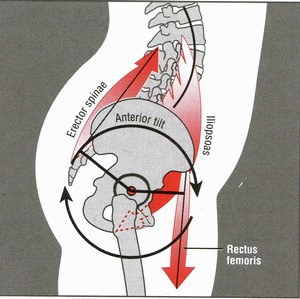7 Reasons To Swing Big Bells
I apologize for the slightly weird camera angle, but I had no one to film it for me.
I mention BIG bells because I assume that the reader/trainee is already a master of swinging normal size bells. Perhaps that will be next week's post, breaking down swing mechanics... What qualifies as "big"? One could argue that is a subjective measurement, which it is, but my standard of a "big" bell is anything over a 28K (62lbs). I had a 32k in the video. Why one should swing kettlebells to begin with shares the same reasons as swinging big bells, but because they're bigger and require more strength and power to move, big bells obviously will have a higher degree of awesomeness.
BIG BELLS and WHY YOU SHOULD SWING THEM:
1. Glute Strength- This is probably the most obvious one. The glutes are (or rather should) be the prime movers in the swing. Considering that athletic power- think sprinting, hitting a baseball, jumping, leaping- is found in the glutes, it would behoove one to have strong glutes.
2. Glute Power- Akin to strength, power= force/time, or in non-physics terms, power is how quickly one can express one's strength in a given time frame. For example, a broad jump is a pretty solid measure of lower body power as the athlete must produce a lot of force to launch the body forward in a very short amount of time. The distance traveled is a combination of strength and how quickly that strength was expressed (see more on Rate of Force Development if you're still confused). Swings are a quick, ballistic movement and thus train glute power because they have to contract forcefully in a brief time frame to hike the bell forward.
It's a less technique-intensive way to build power than say, barbell power cleans or snatches.
3. Teaches/Strengthens Core Stability- The core, encompassing both the anterior and posterior musculature, must remain taut to efficiently transfer force from those awesome gluteals to the arms which are attached to the bell. Without a stiff core, power leaks abound and the swing ends up make everyone's eyes bleed within a 10 foot radius. I've seen it happen. This ability to maintain a stiff core translates nicely to all sports in which the lower body transfers force through the core to the upper body (i.e. pole vaulting, baseball throw or batting, volleyball spike).
4. Fixes Anterior Pelvic Tilt- I've written on APT before (notably here) and how it can negatively affect performance, power output due to misalignment, and have an impact on hip and lower back health. Swings require a powerful posterior hip snap (see video above) at the top of the swing. That snap- via the glutes and anterior core contracting concurrently- pulls the pelvis into a more neutral position if one is in APT. As the glutes and anterior core muscles grow stronger, it becomes more natural for the pelvis to sit in a neutral position instead of tilted forward. I can attest that my APT, and subsequent back pain, has vanished since swinging big bells regularly. Huzzah for neutral alignment!
5. Grip Strength- Holding anything heavy over a given period of time will build grip strength, but holding onto a heavy thing that's flying through the air rapidly adds a challenge to the forearms and hands. Thus, if you're weakest link is your grip, swinging heavy bells is for you!
6. Builds Upper Back Strength- Much like the core, the upper back must remain stiff throughout the swing. The upper back muscles are essentially performing an isometric hold during the swing, and the heavier the bell, the harder they have to contract. The lats in particular must remain tight and strengthing those bad boys carries over to deadlifts and pull ups (both of which are money-makers in the strength game).
7. It's Good For You- If no other reason convinced you, which I can't imagine why not, you should swing big bells because it's good for you. I'm a Jedi, therefore you should trust what I say.






